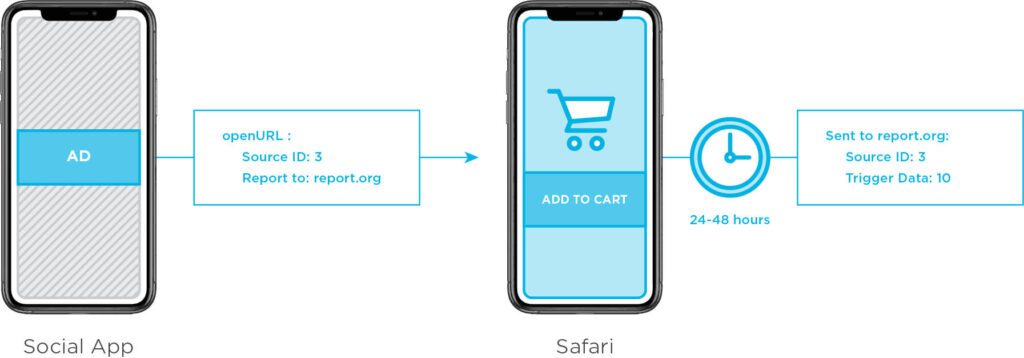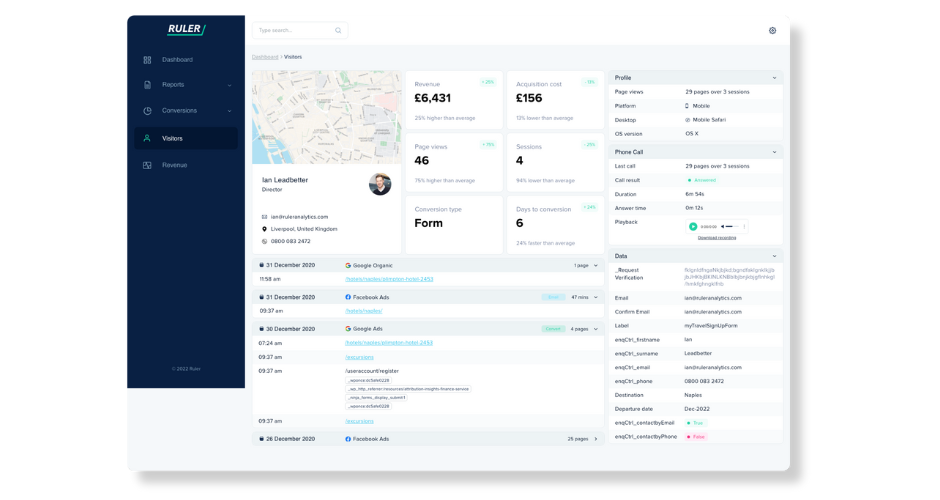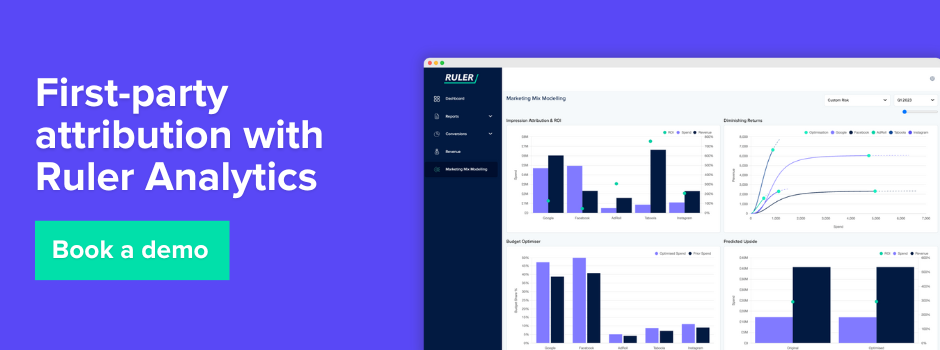Learn how Apple’s iOS 17 privacy changes will impact your reporting and get tips on how to track your marketing effectiveness in this privacy-first era.
Marketers are still struggling to adapt to the privacy changes introduced by Apple in iOS 14.5.
Now, with the release of iOS 17, which includes even more privacy-focused features, marketers face an even greater challenge.
The release of iOS 17, which includes a new feature called Link Tracking Protection, is the latest blow to marketers who rely on tracking data across multiple channels and platforms to measure the effectiveness of their campaigns.
In this article, we will delve into iOS 17, discuss its implications for marketers, and provide some tips on how to adapt to this new reality.
Here’s what we’ll cover:
TL;DR
What’s changing: Link Tracking Protection is a new feature in Apple’s iOS 17 that removes tracking parameters from URLs. These parameters are used by marketers to track things like clicks, conversions, and other engagement metrics.
The problem: Without these parameters, marketers will have a harder time understanding how their campaigns are performing and making necessary adjustments to improve ROI.
The solution: Marketers are encouraged to employ a first-party data strategy, multi-touch marketing attribution for trackable clicks, and marketing mix modelling to overcome the challenges posed by Link Tracking Protection and other privacy practices, such as the death of third-party cookies.
iOS 17 is the upcoming major release of Apple’s iOS operating system for the iPhone.
It was announced on June 5 at Apple’s annual Worldwide Developers Conference, and the release is expected in September 2023.
While iOS 17 includes a number of new features and improvements, such as new apps and customisation abilities, the feature that has marketers talking is ‘Link Tracking Protection’.
Link Tracking Protection is a new feature in iOS 17 that automatically removes user-identifiable tracking parameters from URLs when a user is browsing in private mode on Safari or using Apple’s Mail or Messages.
Apple described Link Tracking Protection in its press release as follows:
“Some websites add extra information to their URLs in order to track users across other websites. Now this information will be removed from the links users share in Messages and Mail, and the links will still work as expected. This information will also be removed from links in Safari Private Browsing.”

The goal of Link Tracking Protection is simple. It’s to give users more control over their online privacy by removing certain URL parameters that enable users to be tracked between different websites.
Apple’s increased privacy and security benefits for users has come at a cost for marketers, who will find it more difficult to track users across platforms and measure the effectiveness of their campaigns.
Here are some specific ways in which iOS 17 makes it harder for marketers:
In iOS 17, when Link Tracking Protection is enabled, Safari will scan the URL of a link and remove any tracking parameters that it finds.
Link Tracking Protection automatically removes tracking parameters from links based on a list of known tracking parameters maintained by Apple. The most common click IDs are fbclid, gclid, and adid, but there are many other tracking parameters that can be removed by Link Tracking Protection.

When you click a link, Safari will scan the URL for tracking parameters. If any are found, they will be removed before you are taken to the destination website.
The loss of click IDs will make it more difficult for businesses to track the customer journey.
Advertisers have long used URL tracking parameters to track users across multiple websites after they click on a link. This data has helped them to inform their targeting strategies and attribute conversions to the correct ads and campaigns.
Without click IDs, marketers will have great difficulty doing all these things. They will need to find new ways to track users across multiple websites, or they will lose valuable insights into how their visitors are engaging with their brand and converting into customers.
Otherwise, they will face the following challenges:
Before you panic, there are two things to bear in mind.
First, source, medium, and campaign parameters in URLs aren’t affected by iOS 17 because they don’t track individual users. They’re only used to track the source of traffic, the medium used to drive traffic, and the campaign that the traffic is associated with.
So you can continue to measure the overall effectiveness of your campaigns across Safari, whether in private browsing mode or not, Apple Mail and Messages.
Second, Link Tracking Protection is only active in Safari Private Browsing mode. LTP doesn’t apply to links opened in regular Safari browsing mode, unless it’s enabled in the settings. It’s estimated that 20% of browser users prefer to use private/incognito over regular browsing.
Still, with the increasing focus on privacy, such as the introduction of Link Tracking Protection and the deprecation of third-party cookies, there has never been a better time to think about the way you collect and employ marketing data across your teams and different data sources.
Here are a few methods you can implement to ensure that your marketing data collection and use practices are compliant with all the latest privacy regulations.
Apple’s Private Click Measurement (PCM) is a solution for marketers to use in the wake of iOS 17.
Private Click Management is a privacy-preserving method for measuring the effectiveness of digital ad campaigns. It prevents advertisers from tracking individual users but provides them with limited information about the clicks and conversions that have occurred.
PCM works by assigning a random identifier to each ad click and uses this identifier to track whether the click resulted in a conversion. The identifier is only used for this purpose and isn’t linked to any personal information about the user.

Source: Kochava
Apple is expanding its Private Click Measurement (PCM) solution to make it more accessible and available in Safari Private Browsing, in an effort to help advertisers adapt to the upcoming iOS 17 update.
However, Apple has faced criticism for its Private Click Measurement feature. Mozilla, for example, has argued that PCM is a poor compromise between privacy and advertising effectiveness.
First-party data will become increasingly valuable with the upcoming demise of third-party cookies and the introduction of iOS 17.
Why? Well, you own your first-party data outright. You collect it directly from your visitors or customers, who have given you their permission to use it.
It could be information about how they’ve interacted with your website or app, their email addresses, purchase history, or browsing behaviour.
By collecting and using first-party data, marketers can continue to measure the effectiveness of their marketing campaigns and retarget users who are most likely to be interested in their products or services.
A first-party multi-touch attribution solution like Ruler Analytics can help you collect first-party data from your website visitors, connect your customer data and unify their touchpoints across different platforms and channels.

Ruler Analytics visitor detail report
For example, you can see all of their interactions with your brand, from the channels they used to find you to the pages they viewed and forms they filled out, all stored under a single customer record rather than in separate data silos.
This is helpful because it allows you to:
Speak to an expert about first party attribution. We’re here to help!
First-party attribution is paving the way for a more accurate, personalised, transparent, and sustainable marketing future. If you have any questions about understanding and setting up first party data attribution, get in touch, and we’ll do our best to help you.
Book a demo to ask questions about Ruler
While a first-party data strategy is the foundation for future-proof marketing, you also need to collect data from other sources to get the full picture.
No single data source can provide the full truth.
Take first-party attribution, for example.
Attribution is great for providing granular insights on individual marketing touchpoints, but it often relies on click path data and doesn’t consider invisible touchpoints, e.g. ad views.
Triangulating data from multiple sources can get you a more accurate measurement of the true state of your marketing.

Here are alternate methods you can use with MTA to triangulate the truth:
Using multiple marketing measurement methods, you can bypass the challenges of iOS 17 and the death of third-party cookies to generate a more complete and accurate picture of your marketing campaign’s performance.
With each new release of iOS, Apple is making it more difficult for brands to track user activity across the internet.
Marketers have no choice but to adapt their strategies to respect user privacy, all while ensuring effective attribution and data accuracy.
By developing an effective first-party data strategy and adopting a multi-faceted approach to marketing measurement, businesses can ensure their marketing efforts remain successful in a privacy-first world.
Are you concerned about the impact of iOS 17 on your marketing measurement and ad targeting? Get in touch to learn how Ruler’s first-party tracking and attribution can help you measure your marketing in a privacy-centric era.
